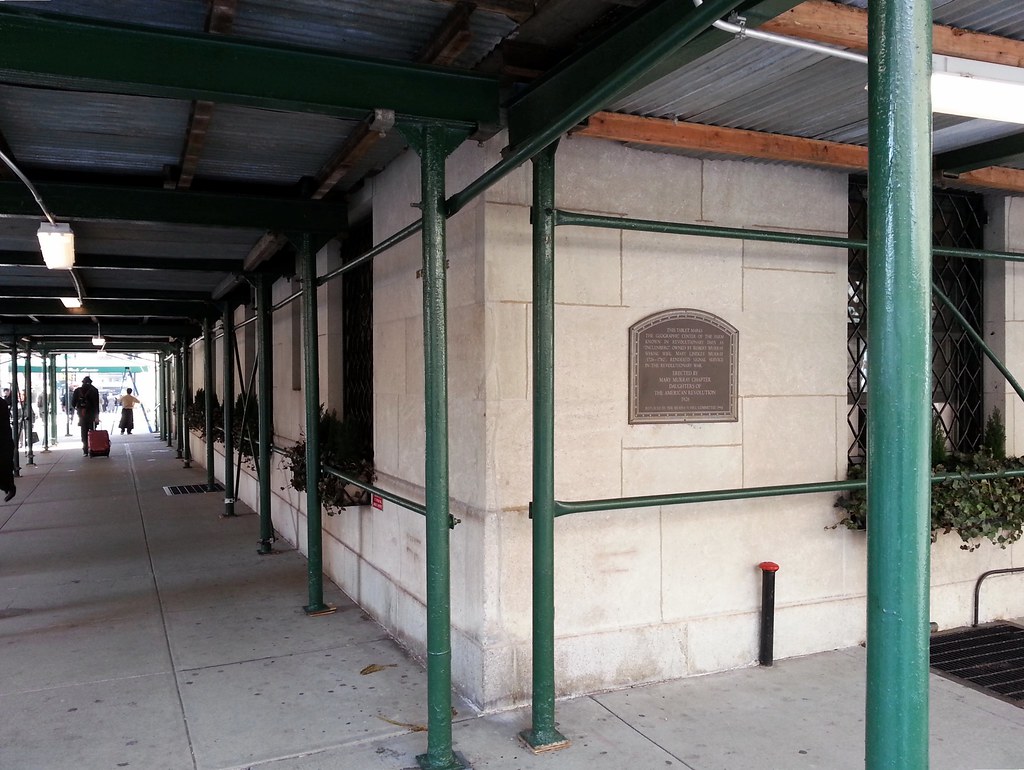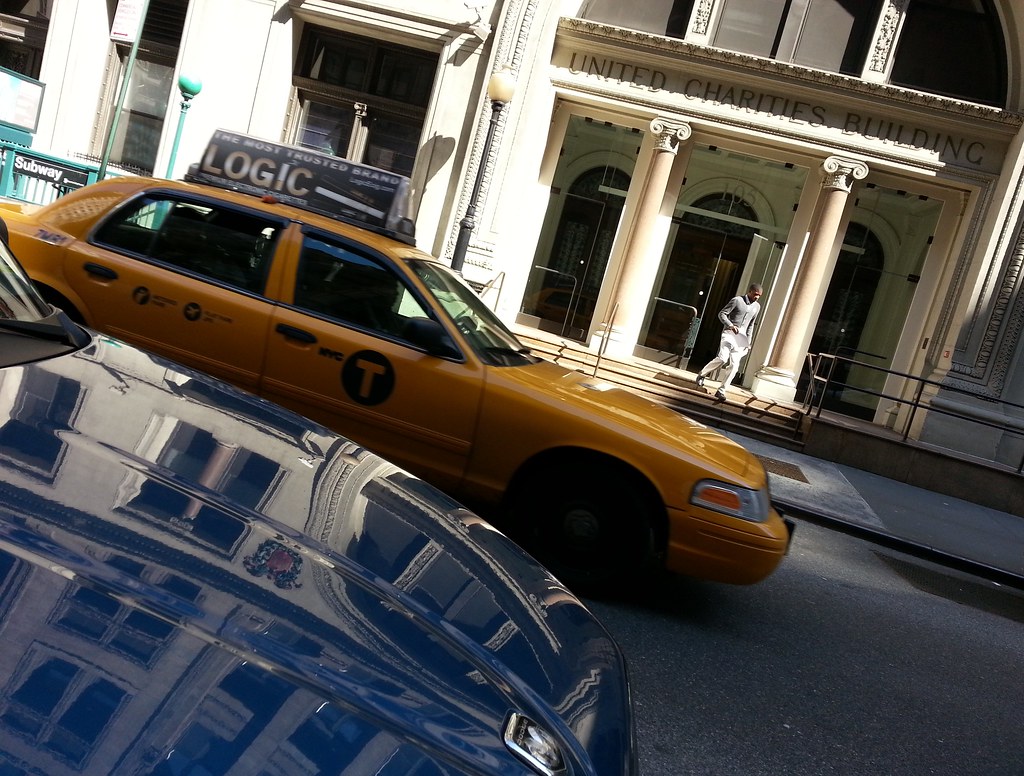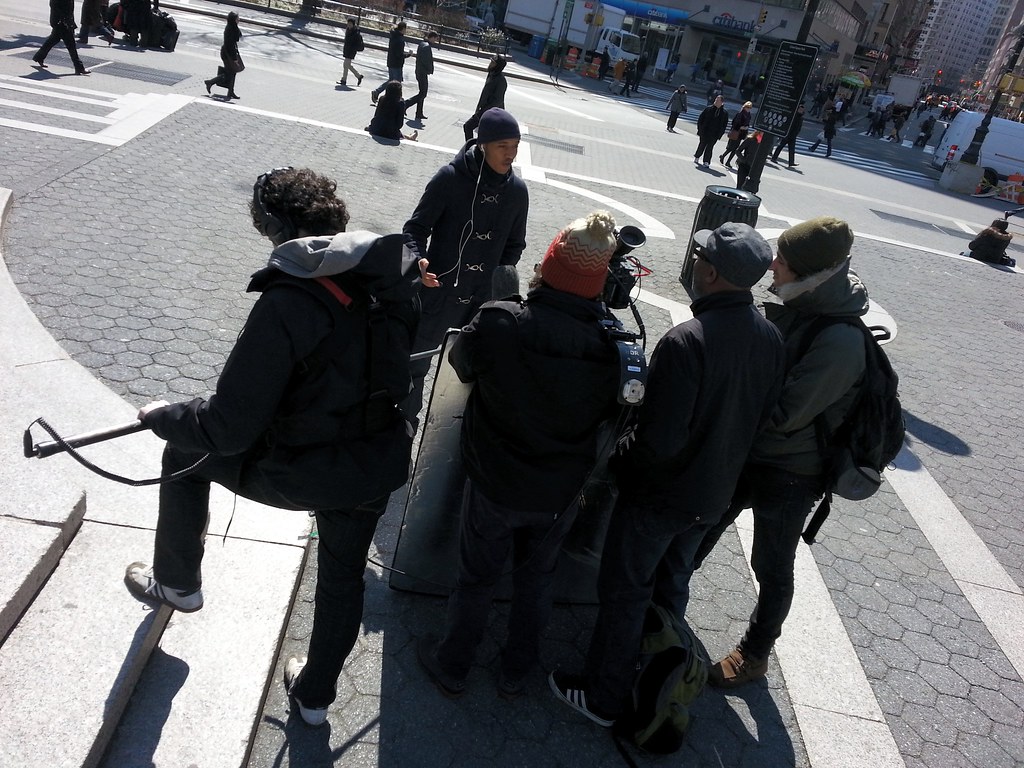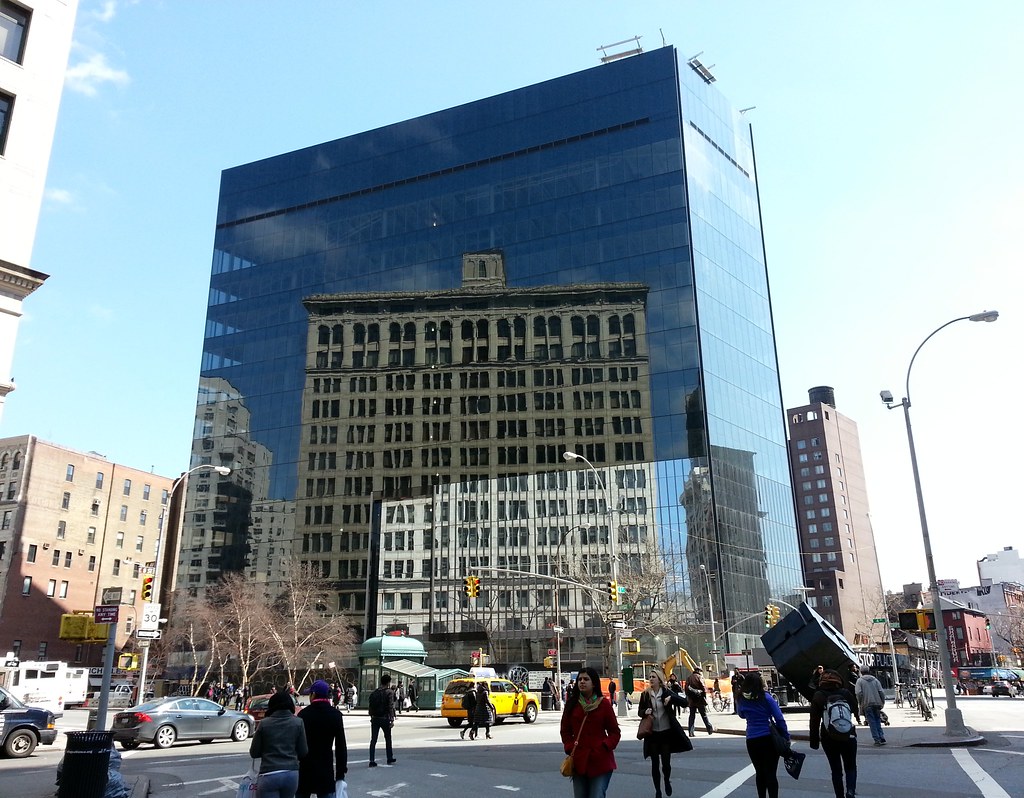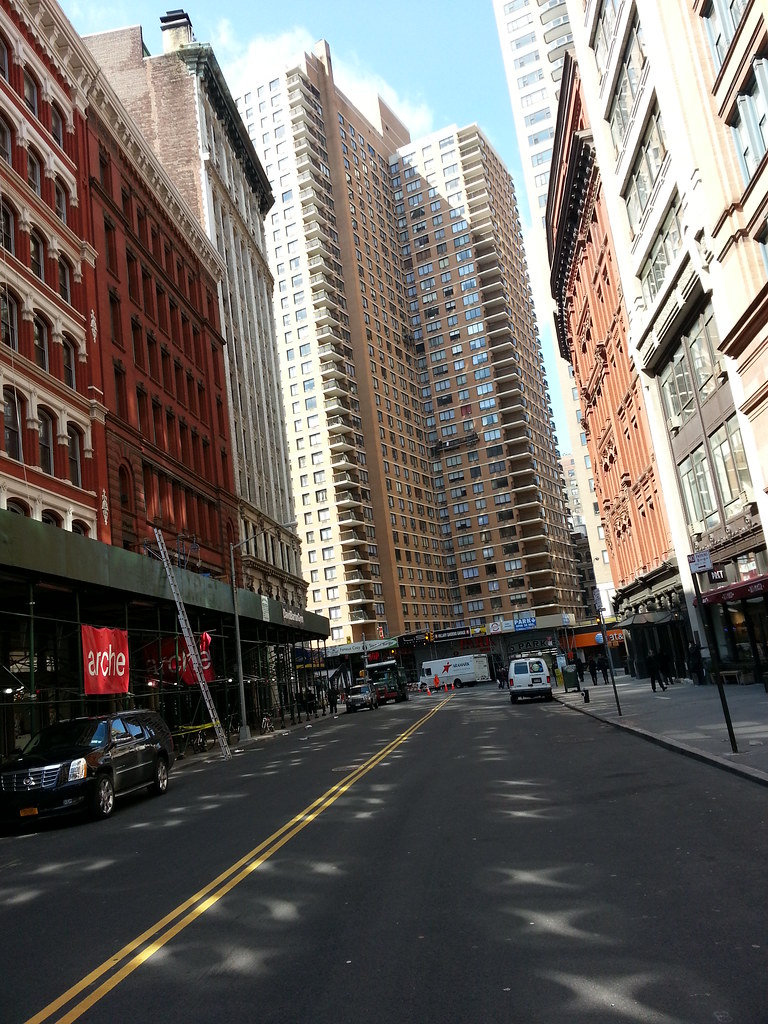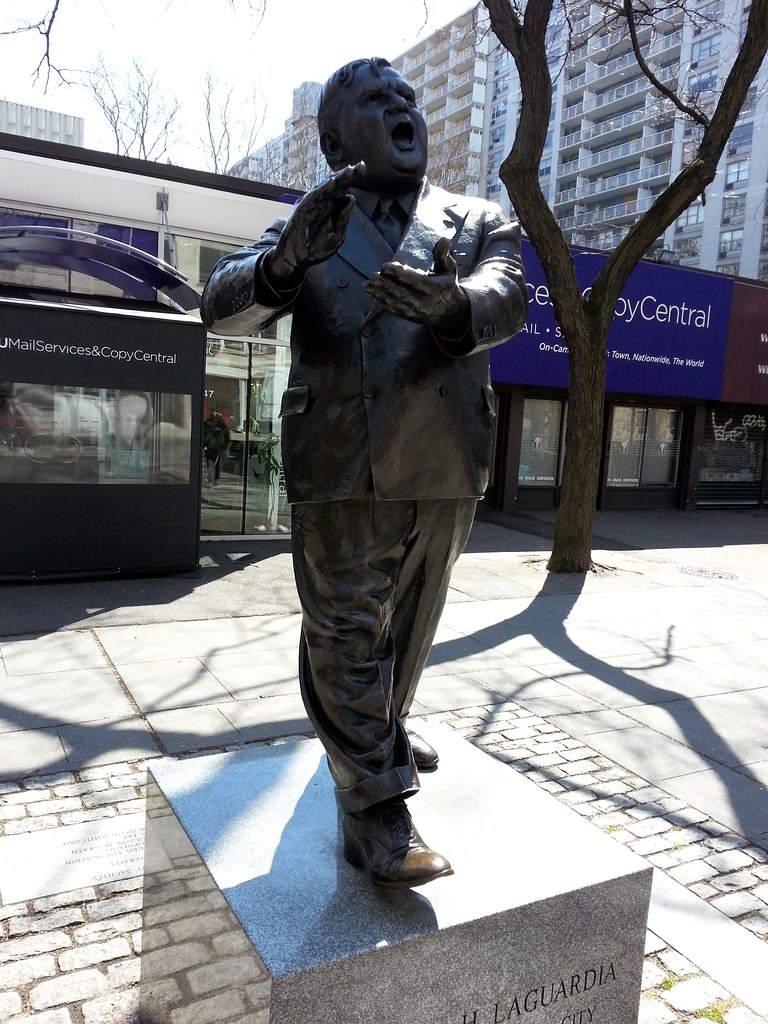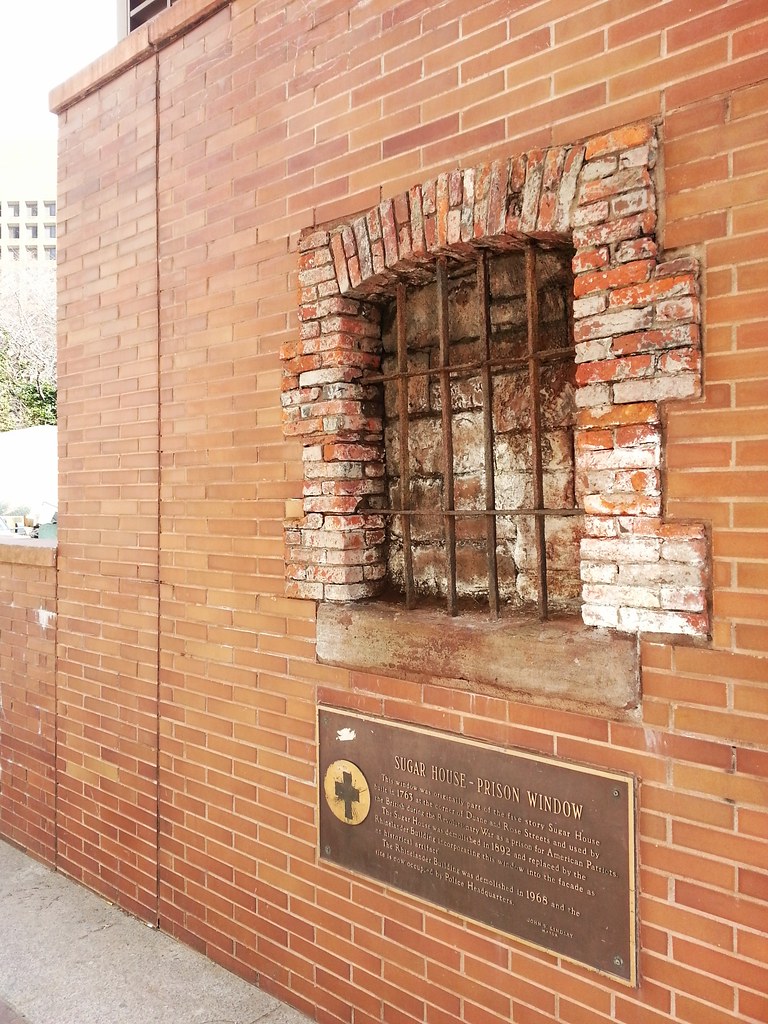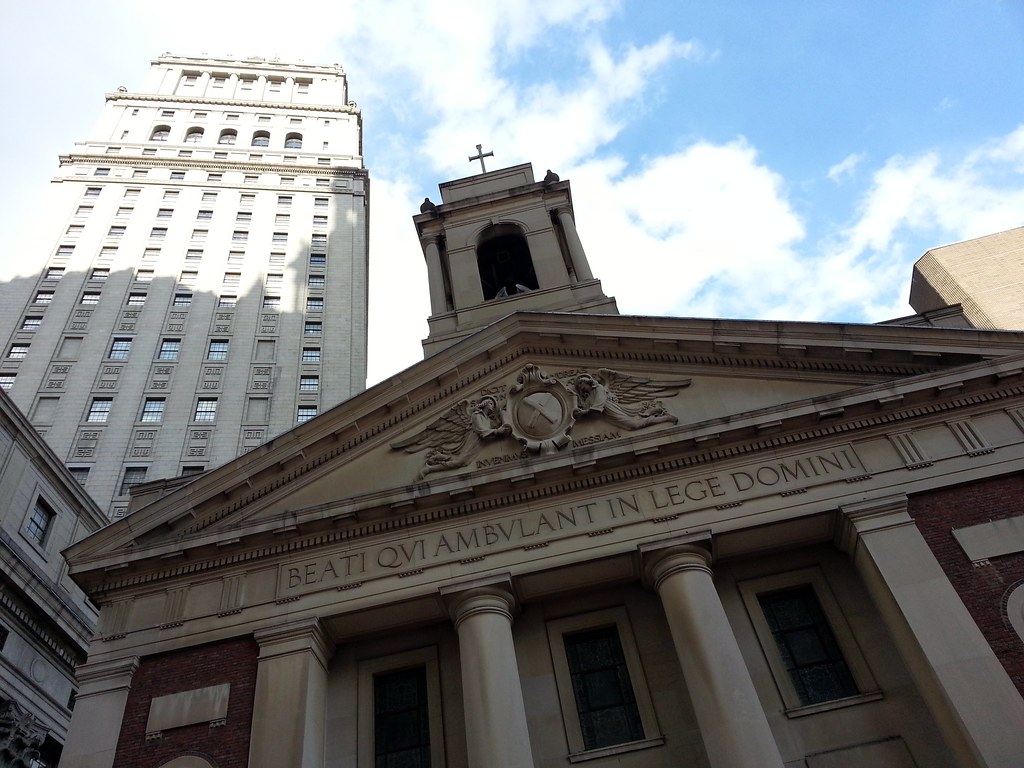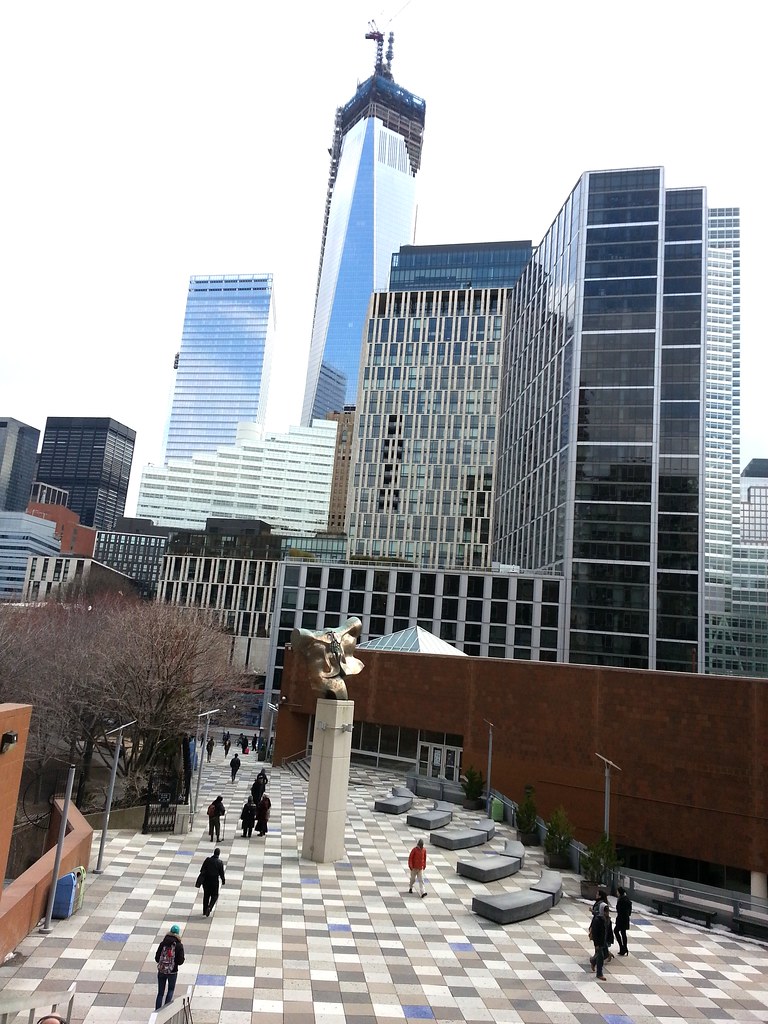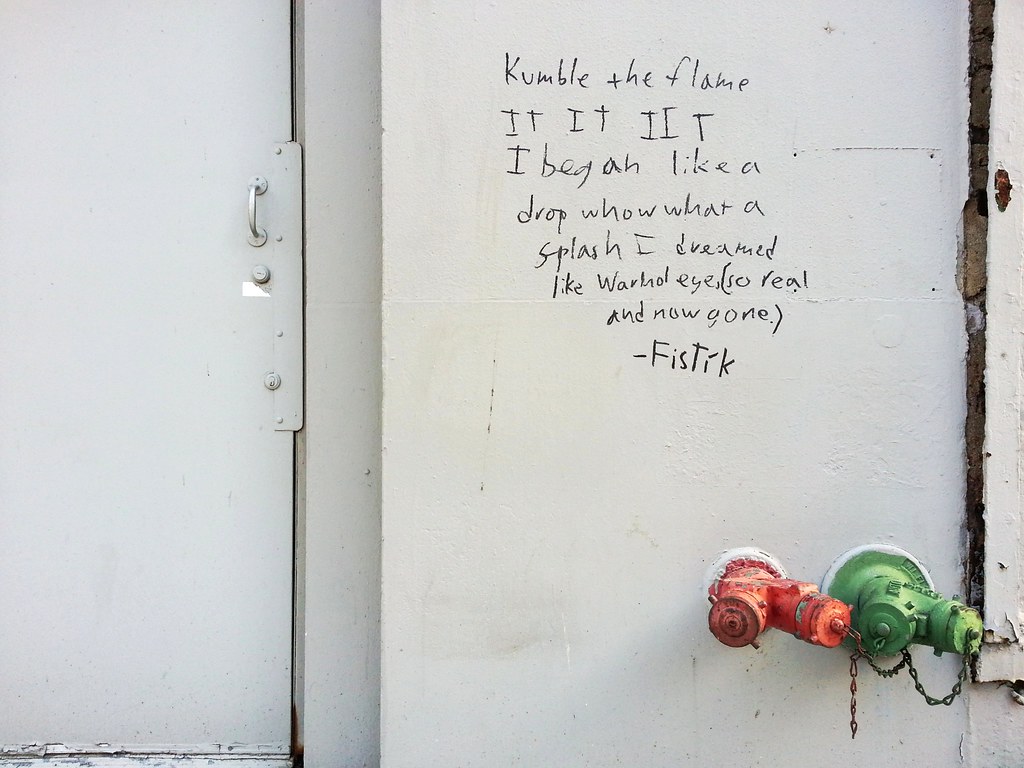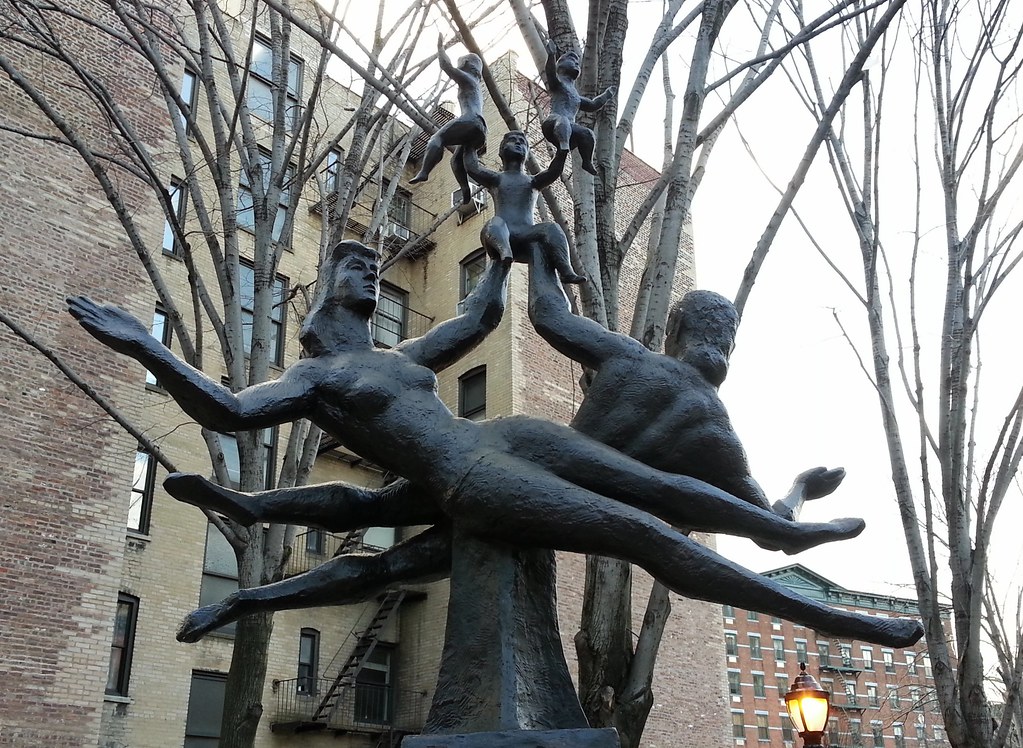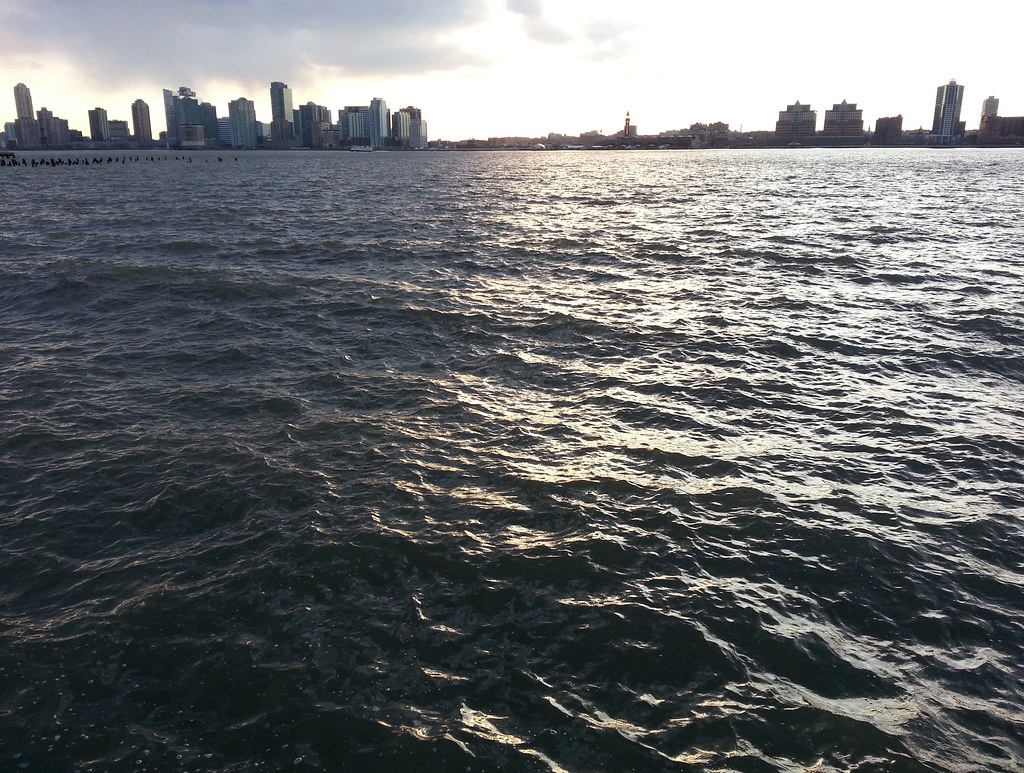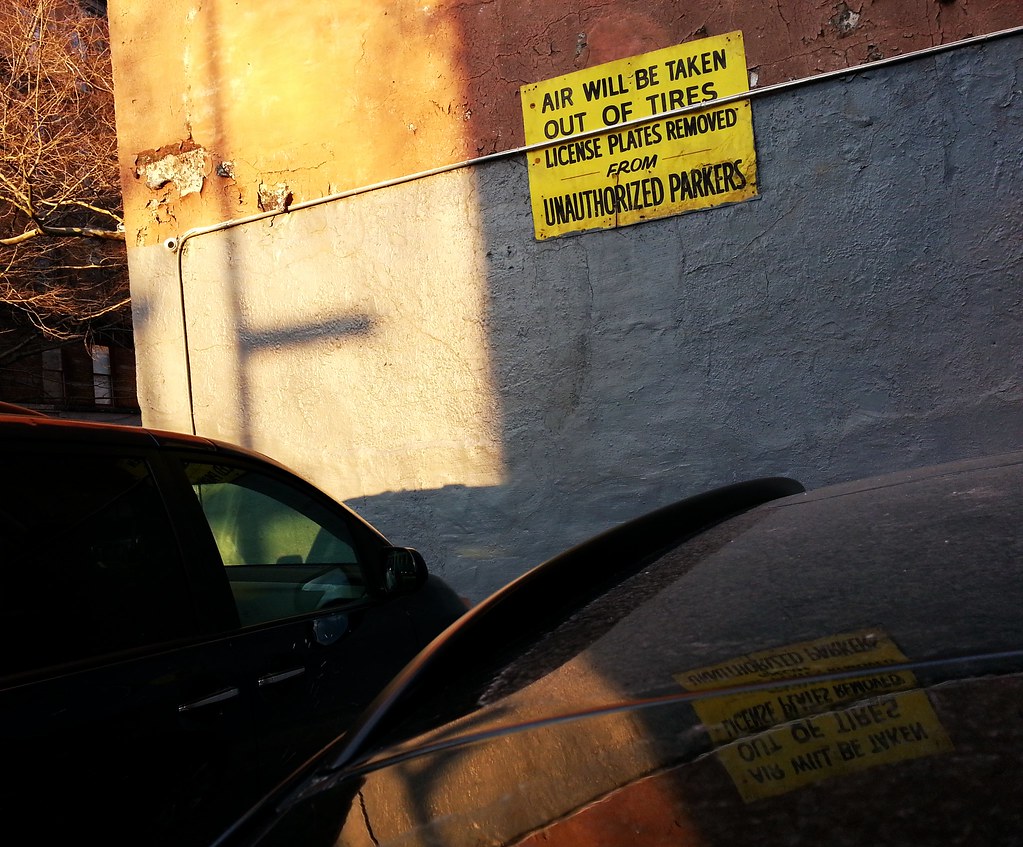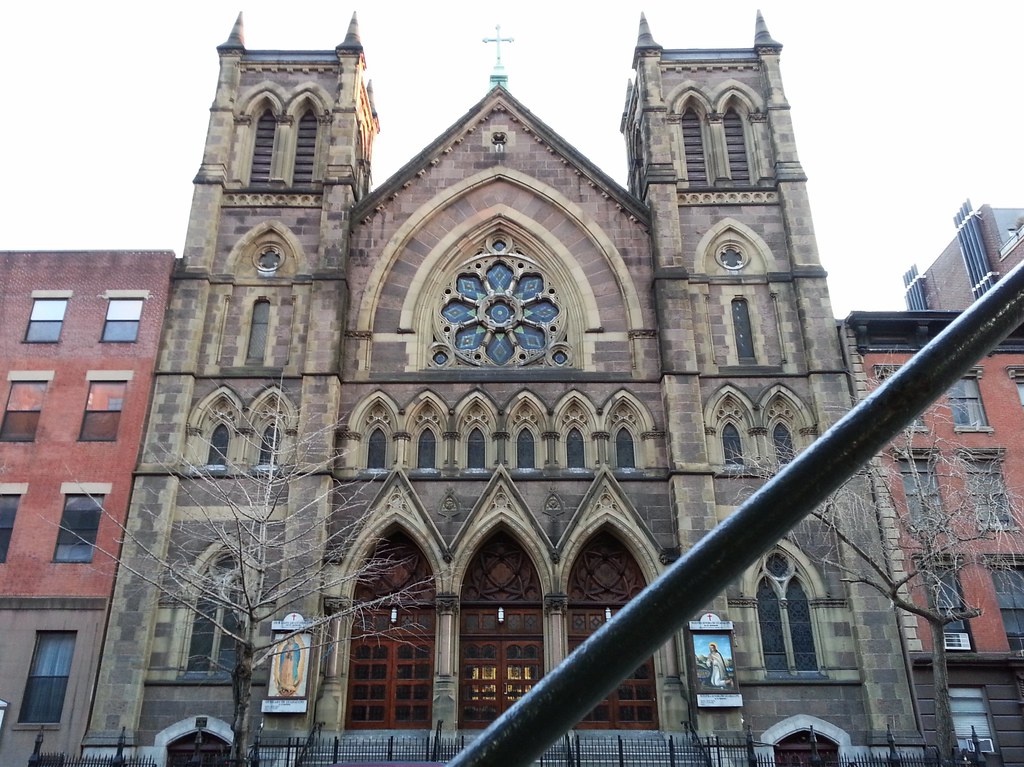

lies the Park Avenue Tunnel, which originally carried rail traffic.

This little shack stands atop a ventilation shaft that, as far as I can tell, is being temporarily used to transport personnel and equipment deep beneath street level to the tunnels of the massive East Side Access project.
This tablet marks the geographic center of the farm known in Revolutionary days as "Inclenberg", owned by Robert Murray whose wife, Mary Lindley Murray (1726-1782), rendered signal service in the Revolutionary War.Speaking of Mary Murray, here's a story recalled by James Thacher, a surgeon in the Revolutionary War:
Erected by Mary Murray Chapter
Daughters of the American Revolution
1926
Replaced by the Murrary [sic; oy!] Hill Committee 1994
When retreating from New York, Major General Putnam, at the head of three thousand five hundred continental troops, was in the rear and the last that left the city. In order to avoid any of the enemy that might be advancing in the direct road to the city, he made choice of a road parallel with and contiguous to the North River, till he could arrive at a certain angle, whence another road would conduct him in such a direction as that he might form a junction with our army. It so happened that a body of about eight thousand British and Hessians were at the same moment advancing on the road, which would have brought them in immediate contact with General Putnam, before he could have reached the turn into the other road. Most fortunately, the British generals, seeing no prospect of engaging our troops, halted their own, and repairing to the house of a Mr. Robert Murray, a quaker and friend of our cause; Mrs. Murray treated them with cake and wine, and they were induced to tarry two hours or more, Governor Tryon frequently joking her about her American friends. By this happy incident General Putnam, by continuing his march, escaped a rencounter with a greatly superior force, which must have proved fatal to his whole party. One half hour, it is said, would have been sufficient for the enemy to have secured the road at the turn, and entirely cut off General Putnam's retreat. It has since become almost a common saying among our officers, that Mrs. Murray saved this part of the American army.
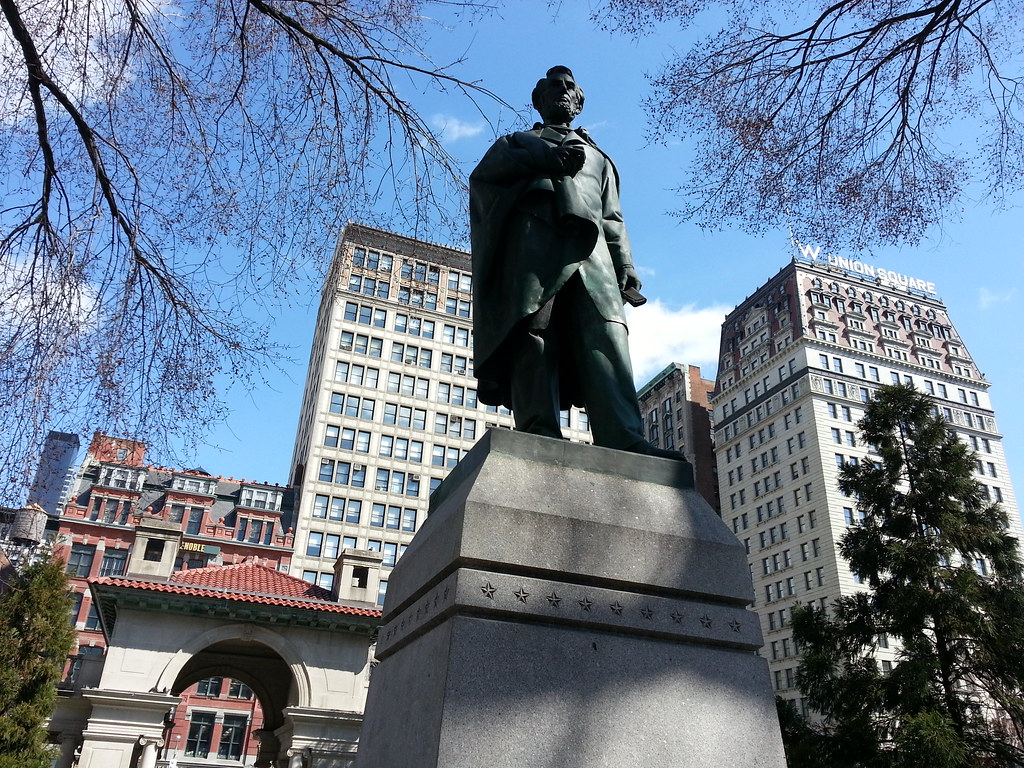
This sculpture was not exactly beloved by the critics of its day: "There never was such a statue done in this world before. It is like the hideous nightmare which people have after supping on roast pork and lobster salad."

The magnificent Grace Church was the first major commission of a young James Renwick Jr. Take a tour!
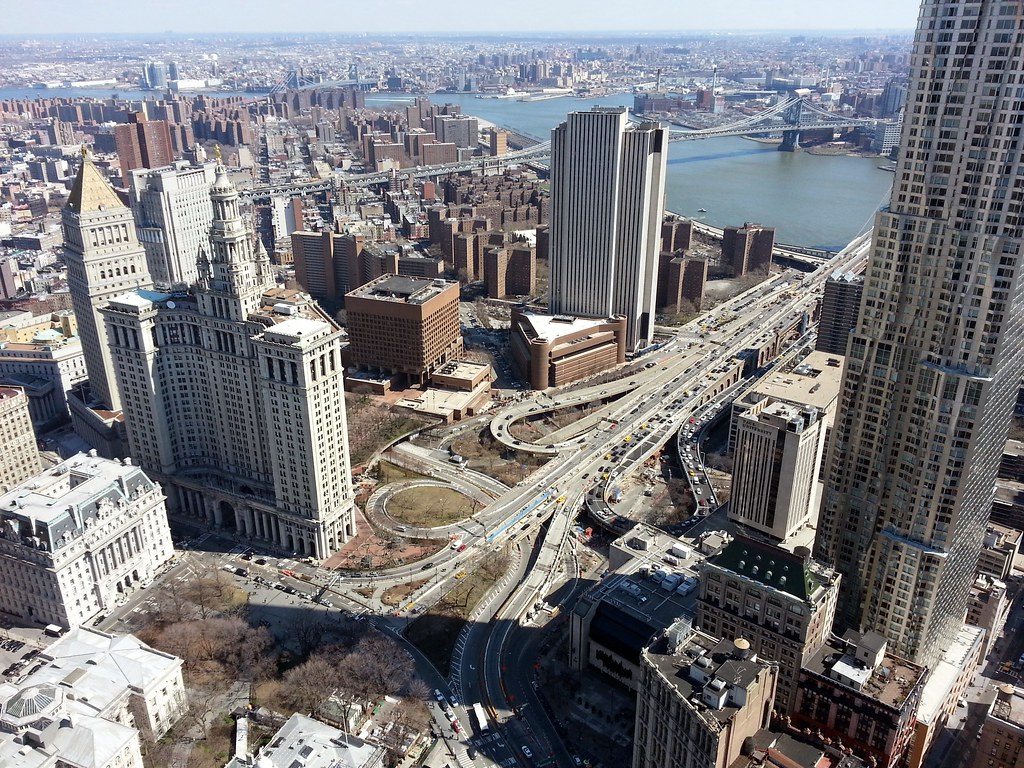
You can spot quite a few of our old acquaintances from up here, most notably the Municipal Building, the Verizon Monstrosity, and the Manhattan Bridge. That's City Hall in the bottom left, with the Surrogate's Courthouse just above it. The building with the pyramidal gold roof is the US Courthouse. The Williamsburg Bridge is visible toward the left in the background. The tall building on the right is Frank Gehry's 8 Spruce Street. And the tangle of ramps running through the center of the image is the Manhattan approach to the Brooklyn Bridge. If you want to see more detail, here's a closer look.
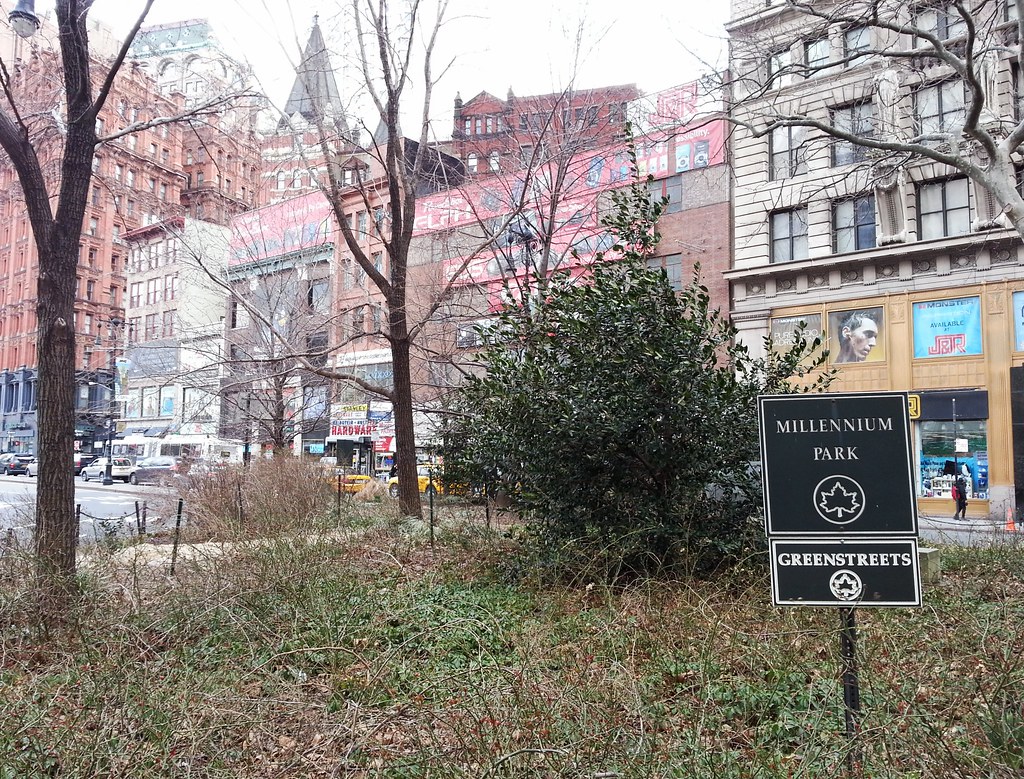
A rather grand name for a largely inaccessible little traffic island
This window was originally part of the five story Sugar House built in 1763 at the corner of Duane and Rose Streets and used by the British during the Revolutionary War as a prison for American Patriots. [Or was it?]
The Sugar House was demolished in 1892 and replaced by the Rhinelander Building incorporating this window in the facade as an historical artifact.
The Rhinelander Building was demolished in 1968 and the site is now occupied by Police Headquarters.
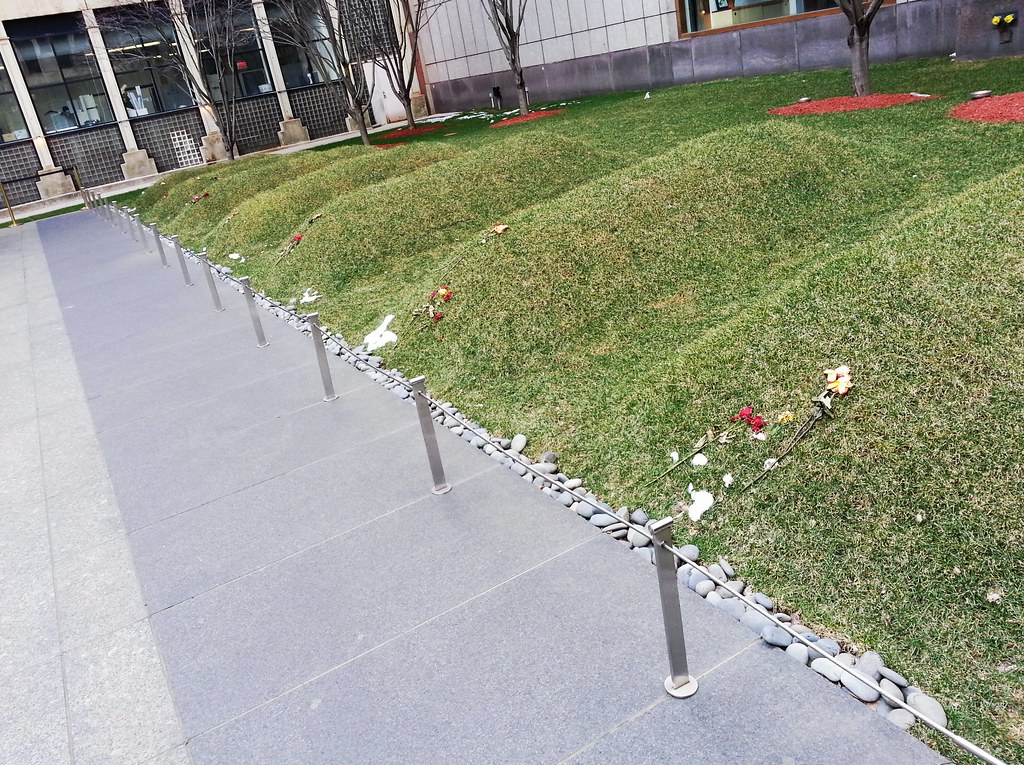
While it's estimated that slaves may have constituted as much as a quarter of New York City's work force during the 18th century, there are very few traces of their existence to be found in the city these days, which makes this shrine all the more significant.
Edward Rothstein of the NY Times said it well in his review of the visitor center that opened here three years ago:
In 1991, when during construction of a General Services Administration office building in Lower Manhattan, graves were discovered 24 feet below ground, and when those remains led to the discovery of hundreds of other bodies in the same area, and when it was determined that these were black New Yorkers interred in what a 1755 map calls the "Negros Burial Ground," the earth seemed to shake from more than just machinery. The evidence created a conceptual quake, transforming how New York history is understood and how black New Yorkers connect to their past.
That is a reason why Saturday's opening of the African Burial Ground Visitor Center, near where these remains were reinterred, is so important. Among the scars left by the heritage of slavery, one of the greatest is an absence: where are the memorials, cemeteries, architectural structures or sturdy sanctuaries that typically provide the ground for a people’s memory?

Part of the Borough of Manhattan Community College, as seen from this bridge

Bowling Green is older, but, according to this sign, "Duane Park was the first open space acquired by the City of New York specifically for use as a public park."

This magnolia, standing in the public gardens of St. Luke in the Fields, is of the same species as the landmarked tree that graces Ms. Hattie Carthan's Magnolia Tree Earth Center.
A touching sign at its base reads:
This Magnolia Grandiflora, "little gem," is the latest of countless lovely things to take root and blossom in the world because of Jeri Baker (1946-1988).
It was planted in her memory by her friends, the women of Dialogue, on May 21, 1989.

It was almost 190 years ago that this school was "selected as the best example of the public school system" (accordingly to a nearby sign) to be shown to the Marquis de Lafayette on his tour of the US in 1824, more than four decades after he served as a general under George Washington during the Revolutionary War. In 2008, a description of his visit, along with many other things, was found in a time capsule from 1917 hidden behind a bronze plaque in the school's auditorium.

These statues are located just across the street from the Stonewall Inn.

Despite its highly desirable Greenwich Village location, this old medical clinic has been vacant for more than twenty years, partially because of some very restrictive deed provisions, and partially because of the enigmatic family that owns it. From the NY Times:
The man who bought it, Mr. Gottlieb, was a challenging little mystery all by himself. He started buying property in the 1950s and by the time he died in 1999, he owned about 100 buildings in the city, an empire estimated at one point to be worth $1 billion. But instead of indulging in expensive suits and chauffeured cars, Mr. Gottlieb — a sloppy dresser who frequently skipped his morning meeting with a razor — drove a beat-up old station wagon and carried his papers around in a shopping bag.
"If you saw him on the street, you would say, 'This man is a bum,' " K. Thomas Elghanayan, chairman of TF Cornerstone, a prominent real estate developer, said. "But he was always very straightforward, he stuck to his word, and he was impossible ever to buy anything from."
No, Mr. Gottlieb was not a flipper. Instead, he tended to buy buildings — generally small parcels concentrated in the West Village, the meatpacking district and Chelsea — and then let them languish.
"Sometimes, arguably, that was a good thing because he kept a lot of old buildings from being destroyed," said Andrew Berman, executive director of the Greenwich Village Society for Historic Preservation. "Sometimes it was not, because he might just sit there as buildings deteriorated."
"They don't necessarily seem to follow a logical or easily explicable path," Mr. Berman added, referring to Mr. Gottlieb's family, a group that has continued his tradition of inscrutability. "And to be honest, that's about as much insight as I can offer."
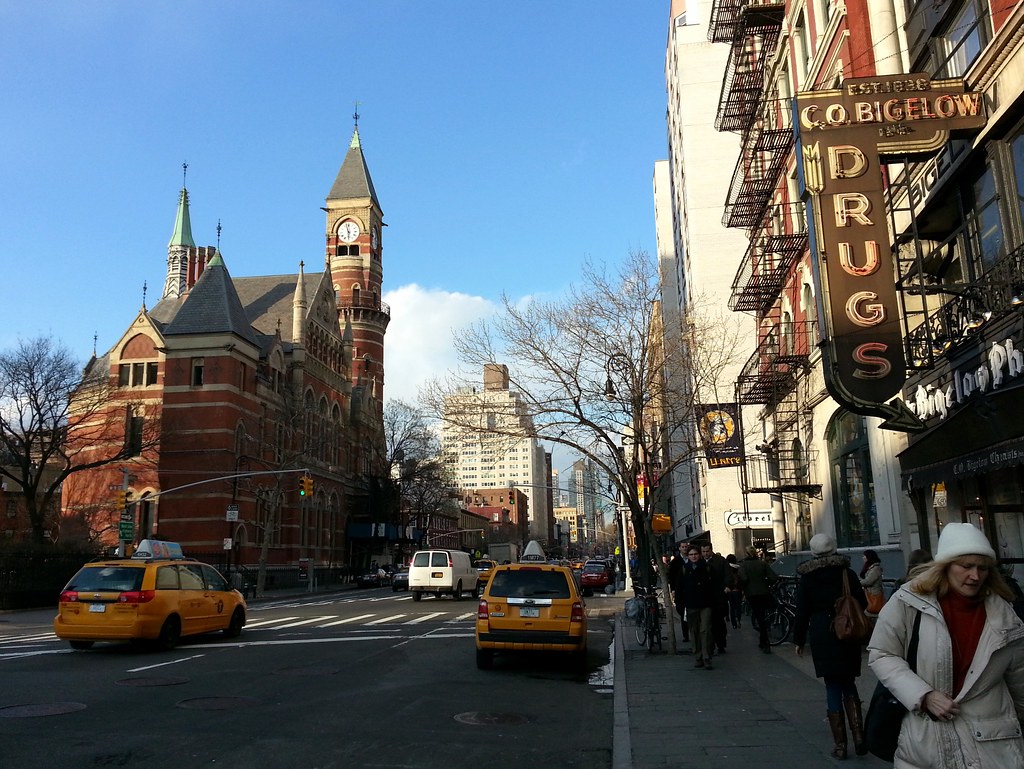
That's the Jefferson Market Courthouse, "a jewel in a swine’s snout", on the left. On the right is C.O. Bigelow, established in 1838, which claims to be "the oldest apothecary in America".

This gracefully curving, block-long street was originally built as an alley for the stables of nearby residents.

This sprawling artists' colony and former Bell Labs headquarters was hit hard by Hurricane Sandy.
Fordham Road is the land of robo-barkers — endlessly repeating loops of recorded messages telling you why you should venture inside a particular establishment. They're most often used by purveyors of cell phones, but here we have a buffet getting in on the action: A lot of food cheap of price.
(This is actually half a block south of Fordham Road on Elm Place.)


